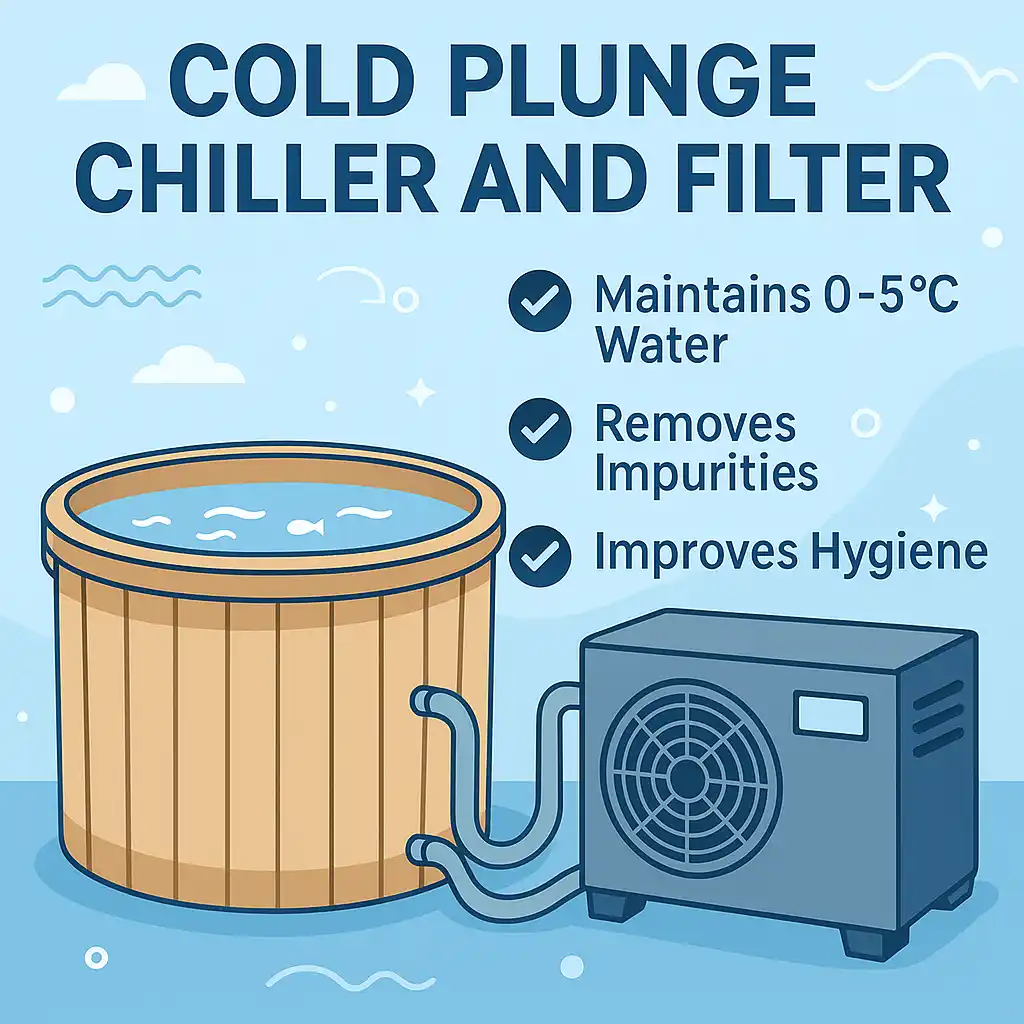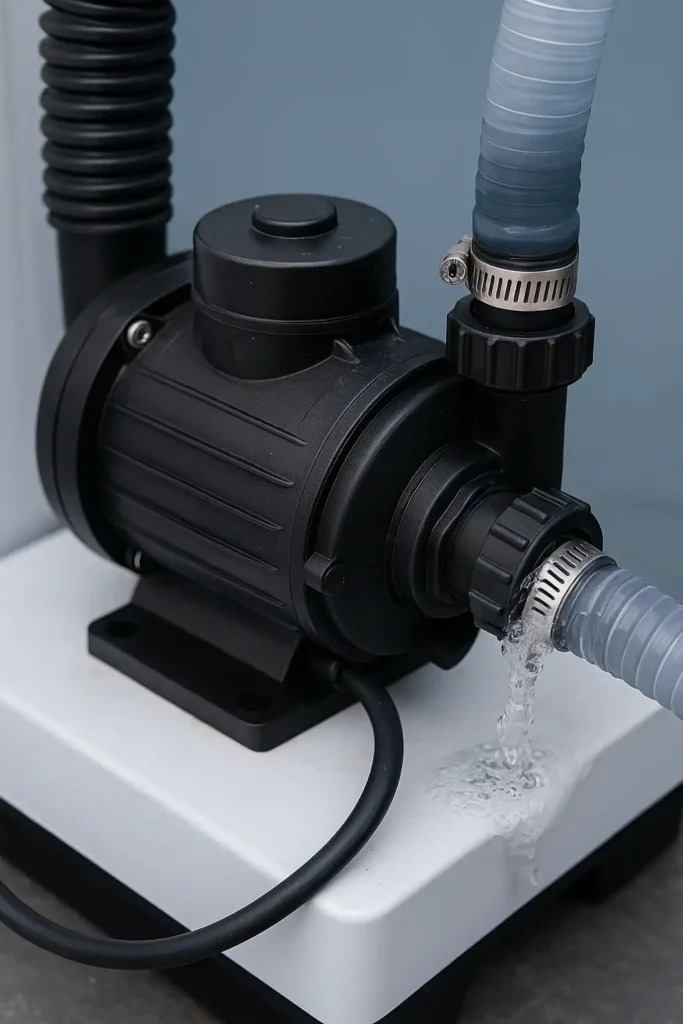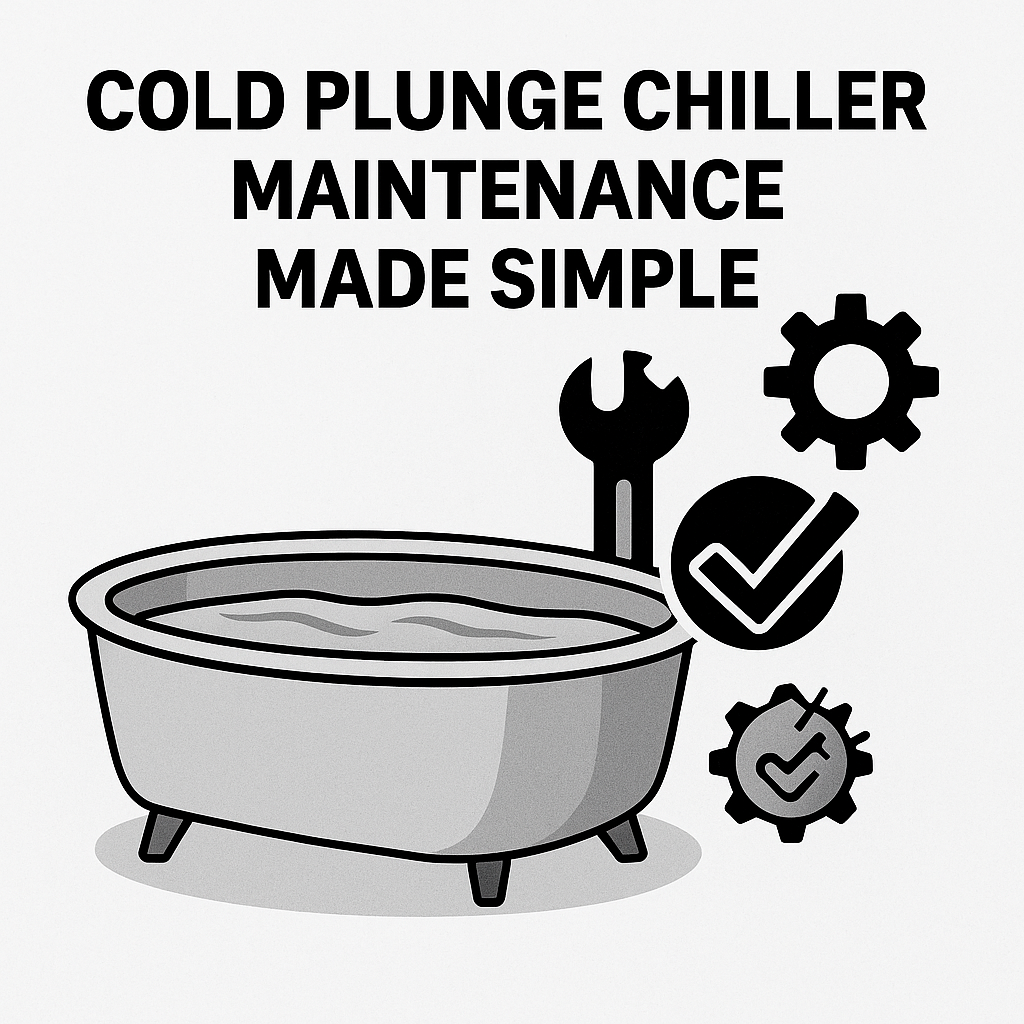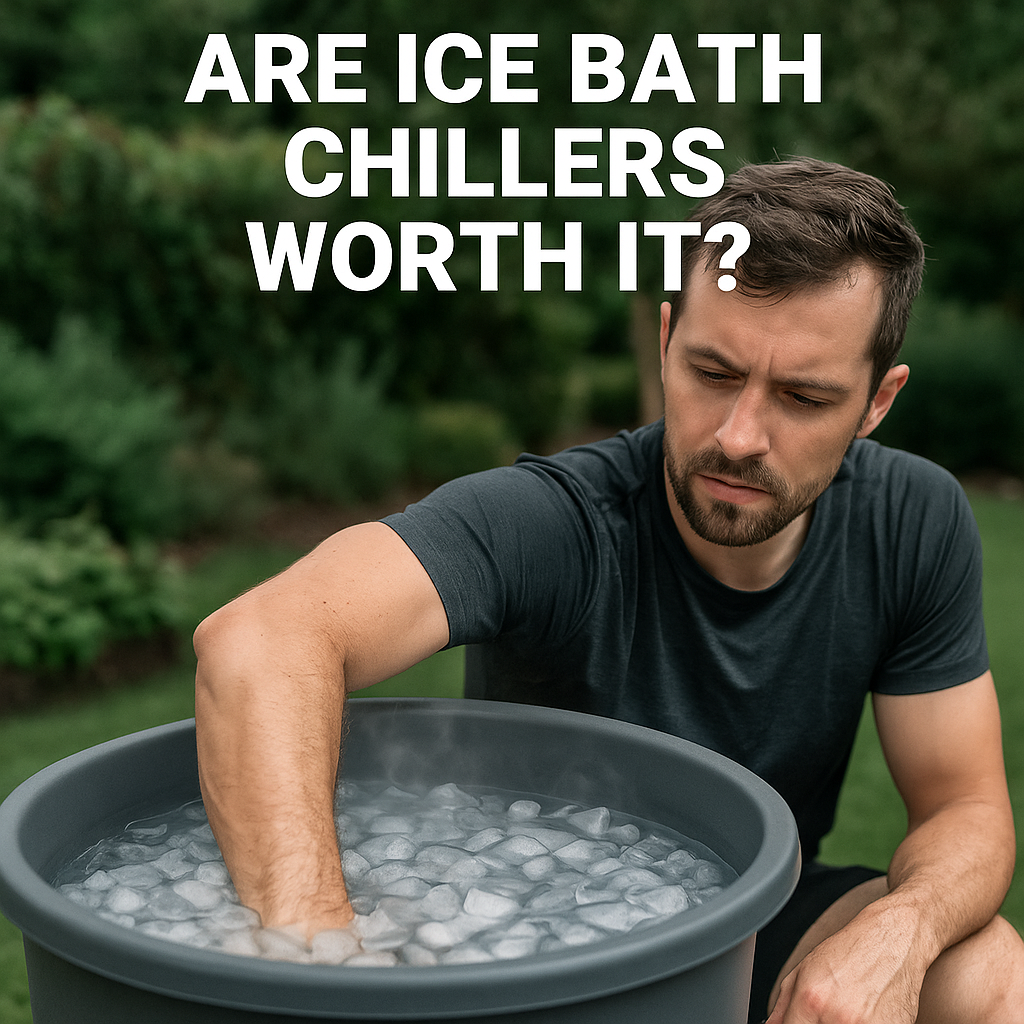Why a Filtered Cold Plunge Matters More Than You Think
A filtered cold plunge water chiller is the perfect solution for those who want crystal-clear, icy water for recovery sessions. By combining powerful cooling with advanced filtration, it ensures every plunge is both refreshing and hygienic Cold water immersion has become one of the most discussed recovery methods in sports, wellness, and even mental health circles. But maintaining safe, crystal-clear water in your plunge is not just about keeping it cold — it’s also about effective filtration. In this guide, we’ll break down how a cold plunge chiller with filter works, why it’s essential, and how to select a system that meets your needs without compromising safety or efficiency.A filtered cold plunge water chiller is the ultimate solution for keeping your plunge at 0–5°C while ensuring the water stays crystal-clear and hygienic. By combining advanced cooling technology with a built-in filtration system, it provides both optimal recovery conditions and long-term water safety. Today, cold water immersion is one of the most popular recovery methods in sports, wellness, and mental health. However, maintaining safe, clean water in your plunge isn’t just about lowering the temperature — it also requires effective filtration. In this guide, we’ll explain how a cold plunge chiller with filter works, why it’s essential, and how to choose the right system without compromising safety or efficiency.
Many cold plunge owners focus only on water temperature — often aiming for 0–5°C (32–41°F) to maximize the physical and mental benefits. However, without filtration, your plunge can quickly become a breeding ground for bacteria, algae, and unpleasant odors.
A built-in or external filter addresses three major concerns:
Hygiene – Removes debris, skin cells, and contaminants that can accumulate after each session.
Safety – Reduces harmful bacteria and prevents infections, especially for shared or commercial setups.
Longevity – Keeps your chiller’s internal components free from buildup, extending its life span.
According to CDC water hygiene guidelines, filtration combined with proper disinfection is the single most important factor in keeping water safe for repeated use.
How a Cold Plunge Chiller With Filter Works
A standard cold plunge chiller is designed to circulate water through a refrigeration system that drops the temperature to your desired range. When a filter is integrated, the process includes an additional filtration loop:
Water Intake – A pump draws water from your plunge tub.
Filtration Stage – Water passes through a cartridge or sand filter to remove particulates.
Cooling Cycle – The chiller’s heat exchanger rapidly cools the filtered water.
Return Flow – Clean, cold water is returned to the plunge tub.
Some advanced units also feature UV-C or ozone disinfection, adding another layer of pathogen control.
Choosing the Right Filtration Type for Your Plunge
Filters are not one-size-fits-all. The choice depends on usage frequency, water volume, and budget.
Cartridge Filters (PP Cotton / Paper) – Easy to replace, great for home setups.
Sand Filters – Long-lasting and ideal for large commercial cold plunges.
Multi-Stage Systems – Combine mechanical filtration with UV or ozone for maximum safety.
For small to medium plunge tubs, a compact chiller and filter combo is often the most efficient option. Systems like the ones featured on our cold plunge chiller product page are designed for both personal and professional use.
Temperature & Water Quality: Finding the Balance
The sweet spot for recovery is 0–5°C, but colder isn’t always better if it means sacrificing water hygiene. Remember:
If the water smells, feels slimy, or looks cloudy, temperature alone won’t make it safe.
Daily or weekly filter maintenance can drastically reduce chemical treatment needs.
High-usage setups (e.g., gyms, spas) should aim for continuous filtration rather than periodic cleaning.
Energy Efficiency and Cost Considerations
A cold plunge chiller with filter will naturally consume more power than a chiller alone, but you can minimize running costs by:
Choosing an appropriately sized unit – Avoid oversizing for your water volume.
Using insulated tubs and covers – Helps retain temperature, reducing compressor cycles.
Scheduling run times – Use timers or smart controls to match usage patterns.
In the long run, the extra filtration cost is outweighed by savings in water replacement and reduced wear on the chiller
Installation Tips for Optimal Performance
Place the chiller in a ventilated area to improve cooling efficiency.
Ensure tight, leak-free connections between the plunge tub and chiller inlet/outlet.
Mount the filter housing where it’s easy to access for cleaning or cartridge swaps.
Consider adding a Wi-Fi control system for remote temperature and pump operation.
If you’re unsure how to integrate filtration into your setup, our cold plunge systems page provides options that include both components in one streamlined package.
Maintenance: Keeping Your Plunge Fresh and Safe
A well-maintained system not only protects users but also extends equipment life. Basic maintenance includes:
Rinsing cartridge filters every few uses and replacing as needed.
Checking pump and hose connections for blockages or leaks.
Running a shock disinfection (chlorine or bromine) periodically for extra safety.
Following the manufacturer’s cleaning schedule for the chiller’s internal components.
The Bottom Line
A cold plunge chiller with filter is not a luxury — it’s a necessity for anyone serious about recovery, whether at home, in a clinic, or in a commercial wellness center. By combining consistent low temperatures with effective filtration, you get the best of both worlds: the full benefits of cold therapy and the confidence of knowing your water is clean and safe.
Outbound Reference
For further reading on water safety in cold therapy applications, visit Mayo Clinic’s guide on cold therapy.








